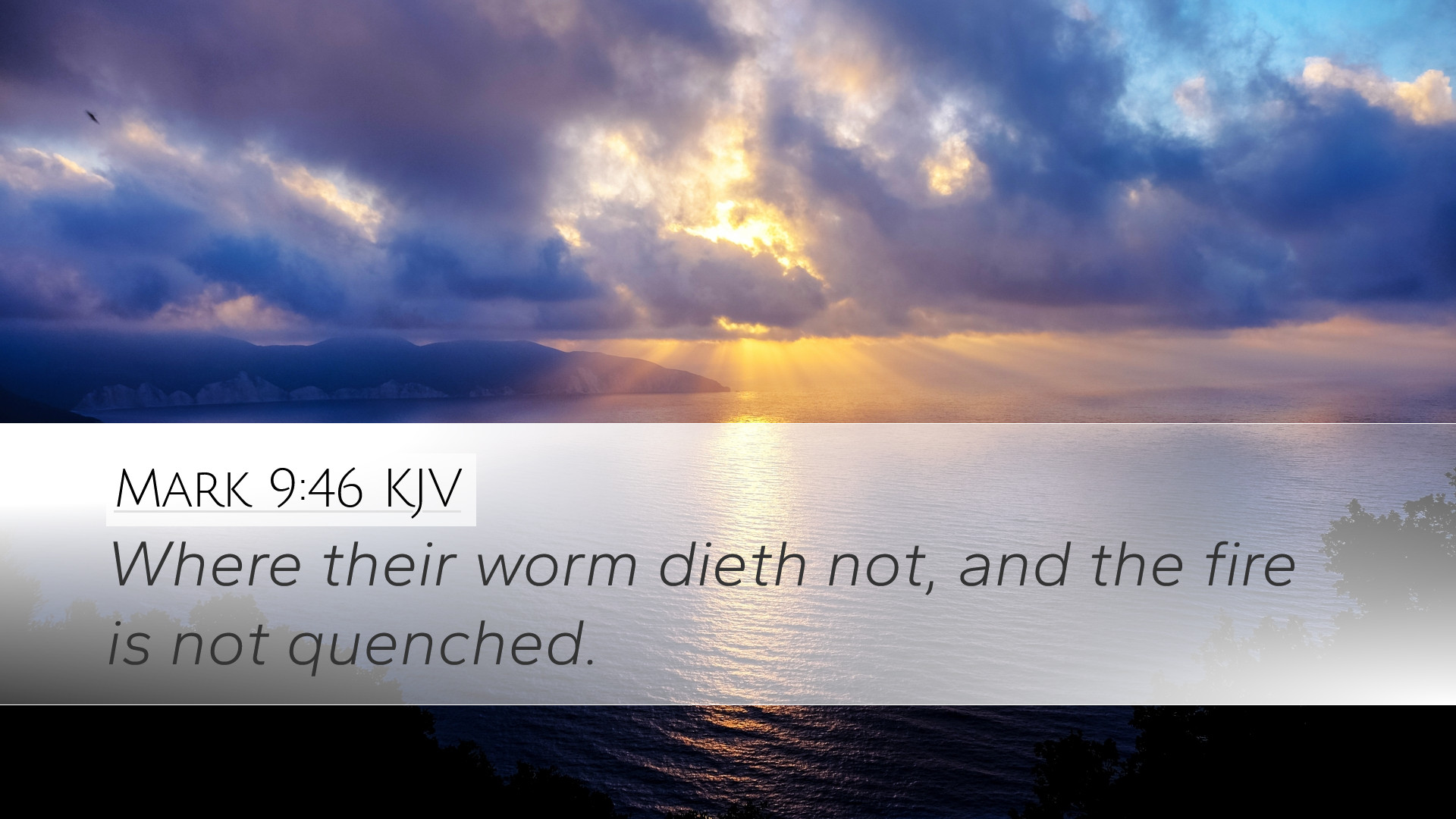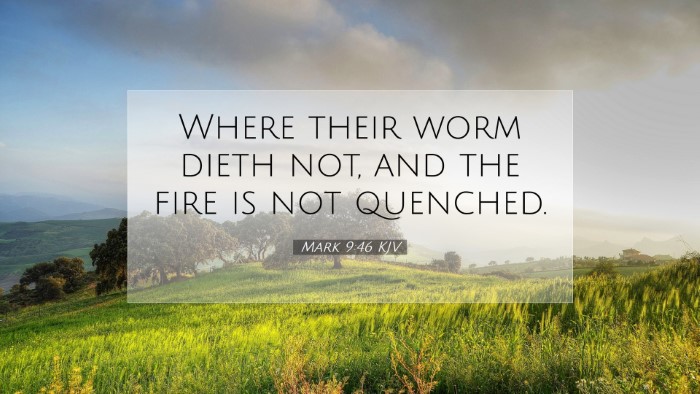Commentary on Mark 9:46
Mark 9:46 states: "Where their worm dieth not, and the fire is not quenched." This verse, though brief, carries profound implications concerning the nature of eternal punishment and the seriousness of sin. Below is a compilation of insights from various public domain commentaries aimed at enhancing the understanding for pastors, students, theologians, and Bible scholars.
Contextual Overview
To appreciate the depth of Mark 9:46, it is essential to consider its context. Within this passage, Jesus addresses the consequences of sin and the radical measures required to avoid eternal separation from God. He employs vivid imagery to communicate the horrors of hell, tying a warning to the fate of those who lead others into sin.
Matthew Henry's Insights
Understanding of Eternal Punishment: Matthew Henry emphasizes the eternal nature of punishment, suggesting that the imagery of the "worm" and "fire" serves as a stark reminder of the unending torment awaiting the unrepentant. He points out that the “worm” signifies a state of perpetual decay, paralleling the moral decay of those condemned.
Moral Implications: According to Henry, the reference to the fire that "is not quenched" serves to highlight the seriousness with which God views sin. He suggests that this imagery should incite a deeper moral reflection, urging believers to heed the call to holiness and reflect on the eternal consequences of their actions.
Albert Barnes' Commentary
Symbolism of the Worm and Fire: Albert Barnes interprets the “worm” as a symbol of remorse and regret that gnaws at the conscience of the damned. This notion of regret is compounded by the unquenchable fire, which serves as an indication of everlasting disturbing consciousness and suffering.
Jesus’ Teaching Method: Barnes notes that Jesus often used hyperbolic language to elucidate deeper spiritual truths. The graphic descriptions were intended to provoke a serious response from His audience regarding the nature of sin and its punishments.
Adam Clarke's Analysis
Historical Context and Interpretation: Adam Clarke provides a detailed look at the historical context of Jesus' words. He notes that this imagery likely resonated with the Jewish audience familiar with the concept of Gehenna, a place associated with eternal fire and judgment.
Encouragement to Seek Righteousness: Clarke encourages believers to internalize the severe implications of this verse, which leads to a robust commitment to righteousness and holiness. He exhorts readers to take sin seriously, lest they risk facing the dire consequences described by Jesus.
Theological Reflections
Nature of Hell: Collectively, these commentaries converge on the consensus of hell's nature as a place of both physical and spiritual torment. There is a recognition of the permanence of one's state of eternal separation from God, serving as a deterrent against sin.
Call to Holiness: The severe warnings in Mark 9:46 are not merely for fear-mongering but are designed to lead believers toward holiness. The implications of eternal punishment are meant to inspire a greater commitment to living a life reflective of Christ’s teachings.
Practical Applications
- Preaching and Teaching: Pastors are encouraged to incorporate the realities of hell into their sermons to provide a comprehensive understanding of sin and grace.
- Personal Reflection: Individuals are urged to engage in self-examination regarding their lives and assurance in their faith to avoid falling into sin.
- Community Engagement: The church is called to actively engage in outreach, warning those who are lost about the dangerous paths they may be on.
Conclusion
Mark 9:46 serves as a sobering reminder of the eternal consequences of sin and the need for a serious commitment to discipleship. Insights gathered from the commentaries of Matthew Henry, Albert Barnes, and Adam Clarke illuminate the magnitude of Jesus’ warnings, urging believers to pursue holiness actively and to evangelize courageously in light of eternal realities.


